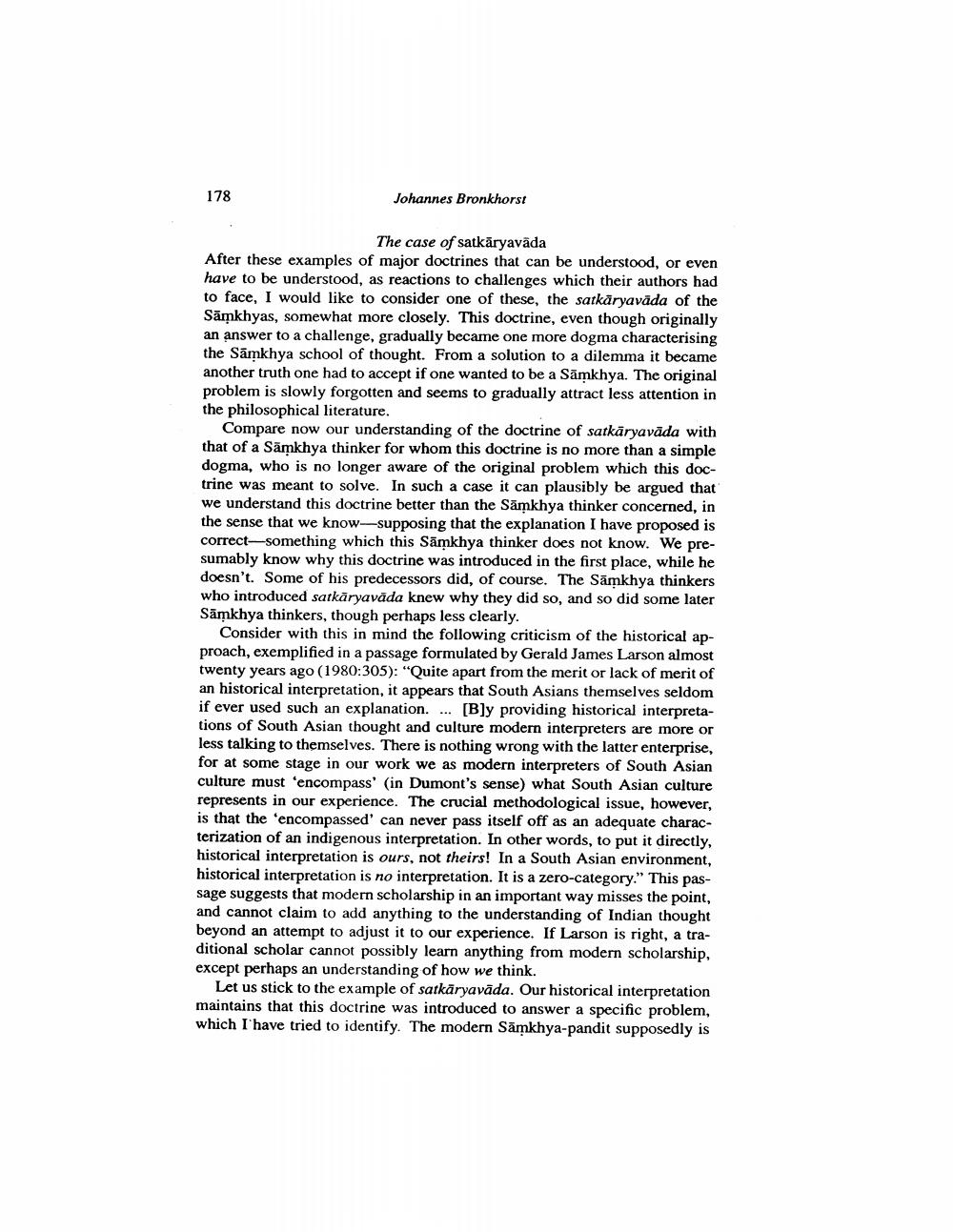________________
178
Johannes Bronkhorst
The case of satkāryavāda
After these examples of major doctrines that can be understood, or even have to be understood, as reactions to challenges which their authors had to face, I would like to consider one of these, the satkaryavada of the Samkhyas, somewhat more closely. This doctrine, even though originally an answer to a challenge, gradually became one more dogma characterising the Samkhya school of thought. From a solution to a dilemma it became another truth one had to accept if one wanted to be a Samkhya. The original problem is slowly forgotten and seems to gradually attract less attention in the philosophical literature.
Compare now our understanding of the doctrine of satkaryavāda with that of a Samkhya thinker for whom this doctrine is no more than a simple dogma, who is no longer aware of the original problem which this doctrine was meant to solve. In such a case it can plausibly be argued that we understand this doctrine better than the Samkhya thinker concerned, in the sense that we know-supposing that the explanation I have proposed is correct-something which this Samkhya thinker does not know. We presumably know why this doctrine was introduced in the first place, while he doesn't. Some of his predecessors did, of course. The Samkhya thinkers who introduced satkāryavāda knew why they did so, and so did some later Samkhya thinkers, though perhaps less clearly.
Consider with this in mind the following criticism of the historical approach, exemplified in a passage formulated by Gerald James Larson almost twenty years ago (1980:305): "Quite apart from the merit or lack of merit of an historical interpretation, it appears that South Asians themselves seldom if ever used such an explanation... [B]y providing historical interpretations of South Asian thought and culture modern interpreters are more or less talking to themselves. There is nothing wrong with the latter enterprise, for at some stage in our work we as modern interpreters of South Asian culture must encompass' (in Dumont's sense) what South Asian culture represents in our experience. The crucial methodological issue, however, is that the 'encompassed' can never pass itself off as an adequate characterization of an indigenous interpretation. In other words, to put it directly, historical interpretation is ours, not theirs! In a South Asian environment, historical interpretation is no interpretation. It is a zero-category." This passage suggests that modern scholarship in an important way misses the point, and cannot claim to add anything to the understanding of Indian thought beyond an attempt to adjust it to our experience. If Larson is right, a traditional scholar cannot possibly learn anything from modern scholarship, except perhaps an understanding of how we think.
Let us stick to the example of satkaryavāda. Our historical interpretation maintains that this doctrine was introduced to answer a specific problem, which I have tried to identify. The modern Samkhya-pandit supposedly is




